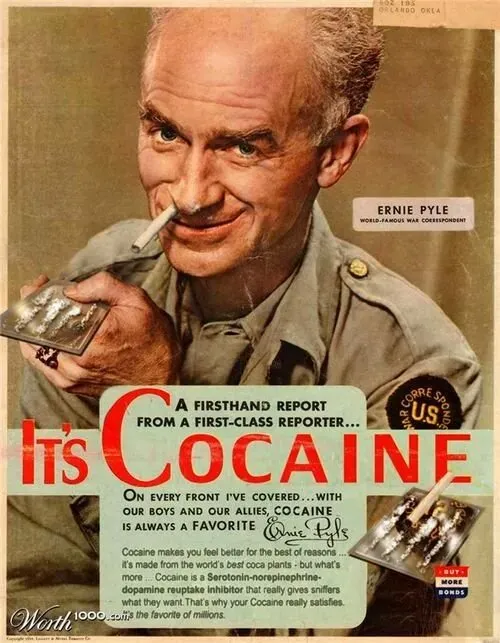A powerful drug is contained in the leaves of the coca shrub, a plant grown primarily in the South American countries of Peru, Bolivia, and Colombia. Archeologists have found coca leaves in Peruvian grave sites dating from approximately a.d.500,along with other items that the culture considered essential for the afterlife. The Indians who live in moun- tains of the Andean region have chewed the coca leaves for thousands of years as a way to diminish hunger, lessen fatigue, and help them gain en- durance to work at high altitudes.When the Spanish arrived in South America in the sixteenth century, they disapproved of coca use,but they were the first to introduce the plant to Europe.

Cocaine was first extracted from coca leaves in Germany in 1855 by a chemist named Friedriche Gaedecke,who named the ingredient erythroxyline. Four years later, Albert Niemann isolated the com- pound and renamed it cocaine. Soon after, cocaine quickly became a “wonder drug.”Sigmund Freud,for example, published a paper titled “On Coca” in which he praised cocaine.The drug was believed to
help reduce a number of ailments,including asthma, digestive disorders, and morphine addiction, and it was often used as an anesthetic in minor surgery. Cocaine was also used in a new,popular drink called Vin Mariani,which was drunk by kings,queens,and a number of other famous people, and as an active ingredient in a new drink called Coca-Cola.
By the late 1800s, however, the unrestrained en- thusiasm for the “wonder drug” began to be tem- pered by a realization that it also had addictive qualities. Even Sigmund Freud now warned of the drug’s dangers.Meanwhile,its easy availability was leading to widespread abuse. Growing concerns about co- caine’s dangers led to restrictions on its use when the U.S. Congress passed and President Woodrow Wilson signed the Harrison Act of 1914.From 1914 until the early 1970s, cocaine use went under- ground,and was largely confined to movie stars, jazz musicians, and thrill seekers. As an illegal drug,cocaine was expensive, and amphetamine was a cheaper, legal substitute.
The so-called psychedelic revolution of the 1960s revived interest in cocaine,and once again,the drug became viewed as a safe high. In the 1960s cocaine was viewed as “the champagne of drugs,” meaning that it was the drug of choice for the rich and fa- mous.Statistics show that by the late 1970s and the 1980s, cocaine use had skyrocketed. By the mid- 1980s cocaine was not only the drug of the affluent. In 1972 one in eleven eighteen– to twenty-five-year- old Americans had used cocaine.Ten years later that figure was up to one in four.In 1982 the National In- stitute on Drug Abuse reported that approximately 22 million Americans had used cocaine at least once, a figure that was up from 5 million in 1974.In 1984 one study found that 69 percent of the individuals arrested for drug-related offenses in East Harlem had traces of cocaine in their urine, while only half of the urine samples obtained were positive for other narcotic drugs such as heroin or methadone.By the mid-1980s a cheaper form of cocaine called crack was being used in the United States.
The increased demand for cocaine led to the rise of powerful cocaine-trafficking organizations such as Colombia’s Medellin and Cali Cartels. Criminals were attracted by the enormous profits that could be made at each level of the cocaine-trafficking business.
By the 1990s Colombian cartels, and to an in- creasingly larger extent, Mexican organizations, were handling most of the cocaine that was being distributed in the United States, while the Colom- bians were working closely with the Italian Mafia and Russian organized crime to traffic the drug in Europe.The collapse of the Soviet Union opened up many new markets for cocaine in Eastern Europe and routes to hide and smuggle the cocaine shipments. However, by 1997 the number of cocaine users in the United States had declined from an estimated 6 million a decade previously to about 2.1 million.
Today, cocaine is a Schedule II drug under the U.S. Controlled Substances Act, meaning that it has legitimate uses, but also a high potential for abuse. Cocaine is still used medically as a local anesthetic for ear, nose, and throat surgery.
source....internet😜😜😜